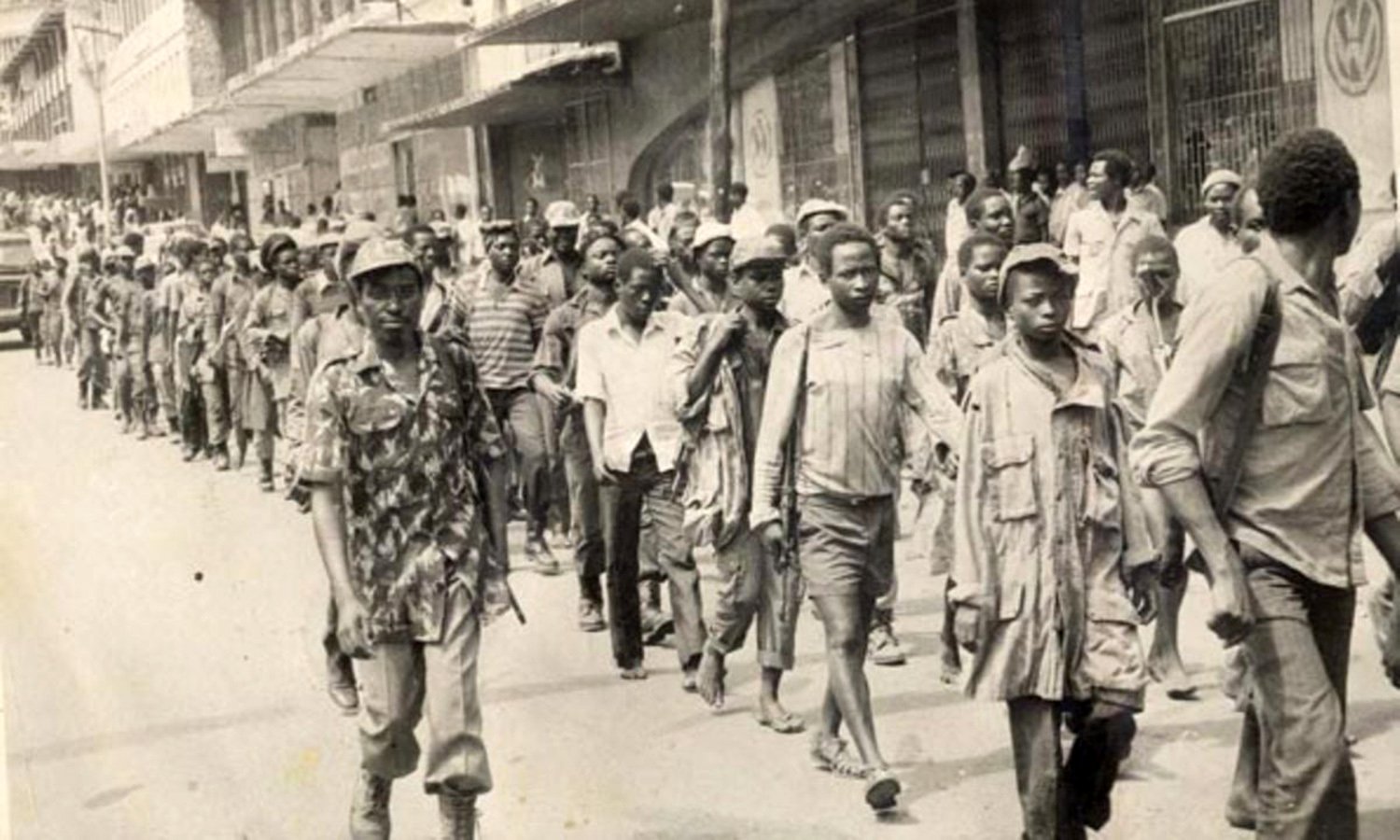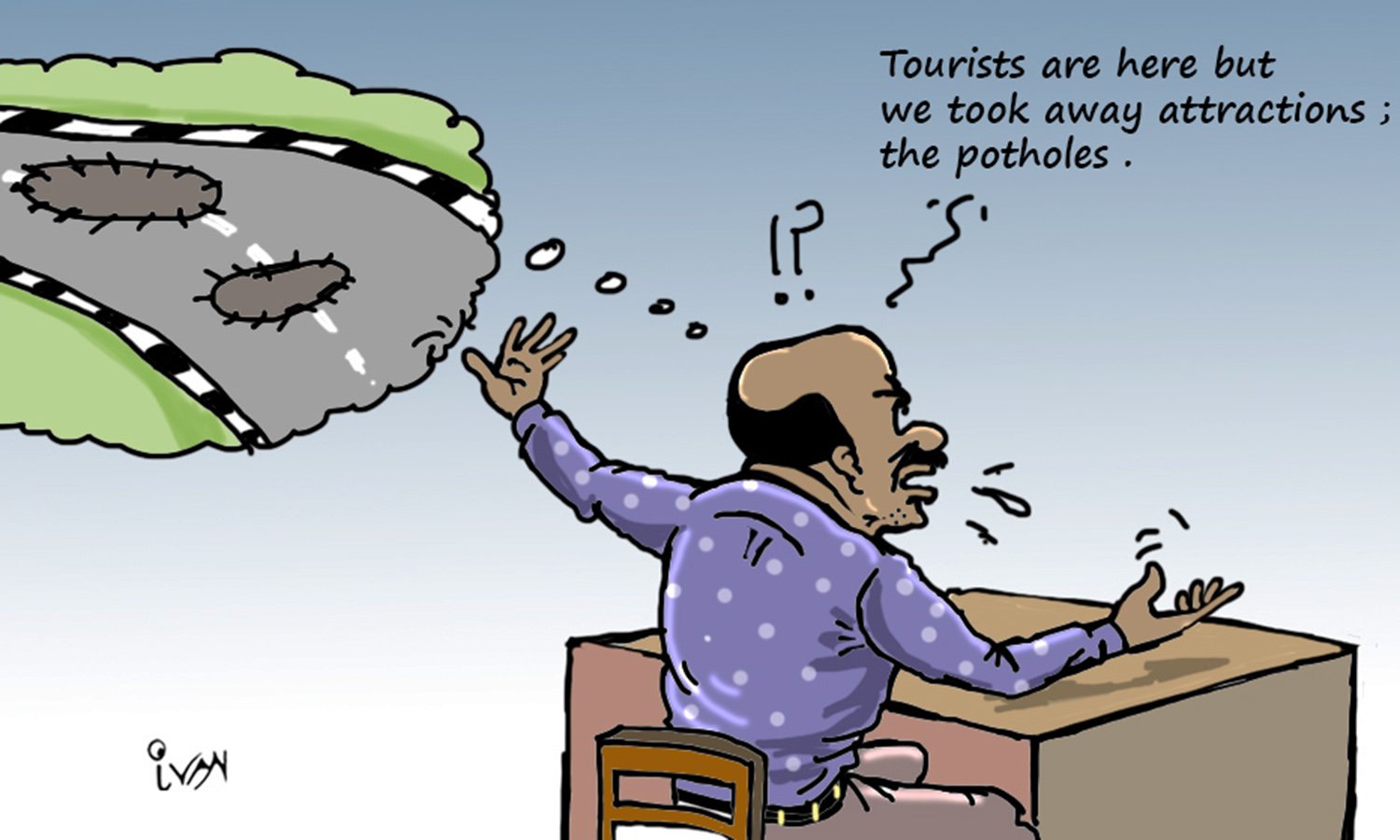Prime
NRM begins final march onto Kampala

National Resistance Army fighters enter Kampala on January 25, 1986. The fighters were cheered by residents as they made their way into the city.
What you need to know:
- Dr Frank Nabwiso, who was a member of the external wing based in the Kenyan capital Nairobi, told Sunday Monitor that the December 28, 1985 resolution was largely informed by fears that the fighting arm of the rebel movement would easily topple the political arm.
On December 28 1985, the External Wing of the National Resistance Movement under the chairmanship of Mr Mathew Rukikaire, passed a resolution encouraging the National Resistance Army (NRA), the fighting force of the rebel movement to descend on the capital Kampala.
Dr Frank Nabwiso, who was a member of the wing based in the Kenyan capital Nairobi, told Sunday Monitor in a previous interview that the December 28, 1985 resolution was largely informed by fears that the fighting arm of the rebel movement would easy topple the political arm.
“There was a fear that the NRA could actually overthrow the leadership of the NRM. There was a real possibility that the revolution could be lost. Mr Museveni was out of the country (Uganda) and his brother, (Gen Salim Saleh) had emerged as the defecto leader,” Dr Nabwiso says.
Salim Saleh had become quite popular among the fighters thanks to the many heroics that the NRA’s mobile units under his command had put up.
Of course there were other commander under him. Those included Col Pecos Kuteesa, Patrick Lumumba and Fred Mugisha, among others.
It is not clear whether the fear of a coup was the product of any intelligence “gathered from the “liberated areas” or from the fighting forces, but it would now appear that the purpose was to divert the fighters from matters politics to matters fighting.
There were however other considerations too. Among them was the rapid deterioration of security in those parts of Uganda that were not under the control of the rebel force.
“We feared that violation of basic human rights would continue because the military junta was unable to stop the various militias (UFM, FEDEMU, UNRF and FUNA) that were in Kampala from carrying out atrocities. We saw no organ that could rein in those armies,” Dr Nabwiso said.
It should be remembered that the NRM/A had in October 1985 cut off the western parts of Uganda at Katonga bridge. The bridge was to later become the scene of many fierce battles, the final one, which was won by the NRA later proved decisive in the force’s march onto the city.
After cutting off western Uganda, the force established an administration in the areas under its control.
The administration in the “liberated areas” was deemed to have been doing a commendable job.
Resistance Councils (RCs), which had earlier been introduced in the Luweero Triangle were rolled out there.
Dr Nabwiso says that it was felt that the rest of the country could benefit from the same approach.
The external wing’s decision culminated into the return of Mr Museveni to the war theatre.
Lack of confidence
Tito Okello’s inaugural speech as chairman of the Military Council and head of State did not inspire confidence in many a Ugandan, especially the elite, that he had what it takes to lead the country.
Should he have perhaps addressed the nation in Swahili which he seemed to be more fluent and comfortable?
Matters were not helped by the fact that his trusted allies like Bazillio Okello were not any better. Old boys of Busoga College Mwiri often reminisce about how the General showed up on the hill one morning and asked them to relay a message to rebel leader Yoweri Museveni.
“Some of you, it is your brother, some of you, it is your father, some of you, it is your sister who has cut (off) the road (at Katonga). Go and tell him that Bazillio has said stop disturboning (disturbing) him” he was quoted to have told the impromptu gathering in front of the headmaster’s office.
The duo came across as too ill prepared to lead Uganda. That only turned the chips in favour of the rebel NRM/A.
Power shift
It would in light of the above not be overly wrong to say that the NRA’s march onto Kampala had always been a case of when and not whether or not it would happen.
The force had started reorganising itself almost immediately after the Okellos, Bazillio and Tito had overthrown the Milton Obote led UPC government in July 1985.
In August 1985 a contingent of 196 North Korean soldiers who had been working as military advisers to the UNLA left Uganda. It was not possible to establish why they did.
That month alone, the NRA went on the offensive on multiple fronts hitting forces of the Uganda National Liberation Army (UNLA) and their allies in several parts of central and western Uganda. Garrisons such as Masaka and Mbarara were besieged and subsequently captured.
Many of the UNLA soldiers in those garrisons were rehabilitated and absorbed into the NRA. That boosted its numbers and the captured weapons were a tremendous boost to the NRM war effort.
The coup itself had also angered quite a number of Pro Obote men and officers in the UNLA.
Many of them were not willing to fight on the side of the Okellos. Others stayed on in Kampala, while others crossed to the “liberated areas” and joined the NRA.
Some of the season fighters who could perhaps have helped the UNLA also fled into exile.
By the time Mr Rukikaire made the announcement the NRA could march the UNLA and its allies punch for punch.
Always coming
The external wing’s move came only 11 days after the Tito Okello government and the National Resistance Movement had signed the Nairobi Peace Accord, the culmination of the peace talks that are often cheekily referred to as the Nairobi Peace jokes.
The announcement also came a day after, Mr Museveni warned that the NRA would move to stop violence by the UNLA and its allies.
The rebel leader’s comments followed reports of widespread looting, arson and killing of civilians amid what appeared to be a state of anarchy.
The UNLA and their allies like the Federal Democratic Movement (FEDEMU), the Former Uganda National Army (FUNA) and the Uganda National Rescue Front I (UNRF-1), whose forces had been integrated into the UNLA and whose commanders had been named members of the military council, carved up Kampala into areas over which they claimed control.
There was, however, no central command or control. That proved catastrophic.
Some scholars have since argued that it was always going to be impossible to implement the terms of the accord. Circumstances seemed to have conspired against the accord right from the word go.
On December 18, 1985, a day after the accord had been signed, Britain announced that it would not be contributing manpower to the ceasefire monitoring team.
Canada and Kenya were the other countries that had been expected to contribute men and officers towards the team. The reasons for Britain’s decision to decline remain a mystery, but it should be remembered that Britain was among the countries that had been contributing troops to the Commonwealth Military Training Team (CMTT) and the British Military Training Team (BMTT), which had been involved in training the UNLA before the fall of the Obote regime.
On January 22, Gen Tito Okello made a last ditch effort to save his government by offering to meet rebel leader Yoweri Museveni for fresh peace talks, but with some of his allies like FEDEMU turning their guns on his forces.
With the NRA closing in on his residence on Acacia Avenue, Gen Okello fled Kampala by helicopter and entered Kenya on the morning of January 25 while his aides followed by road.




